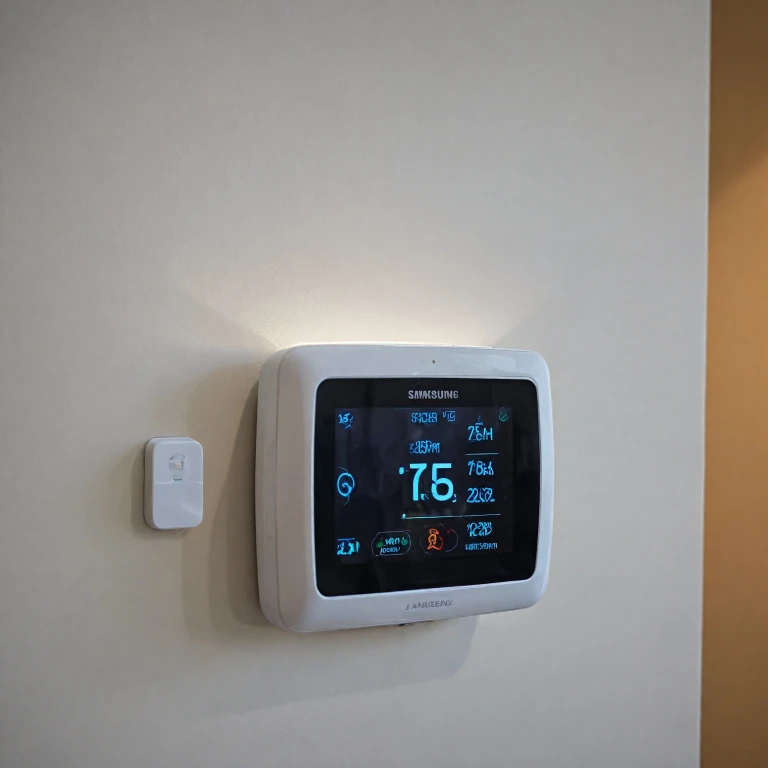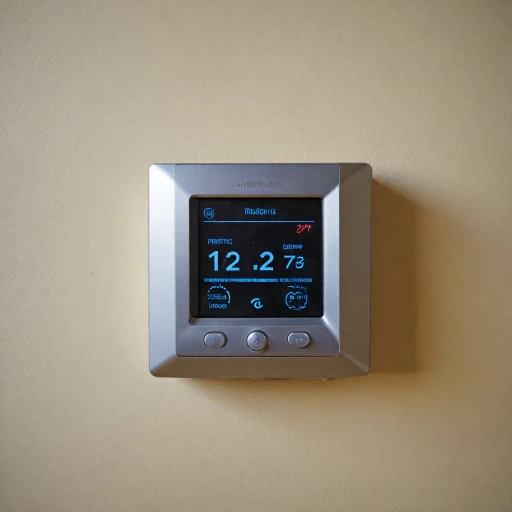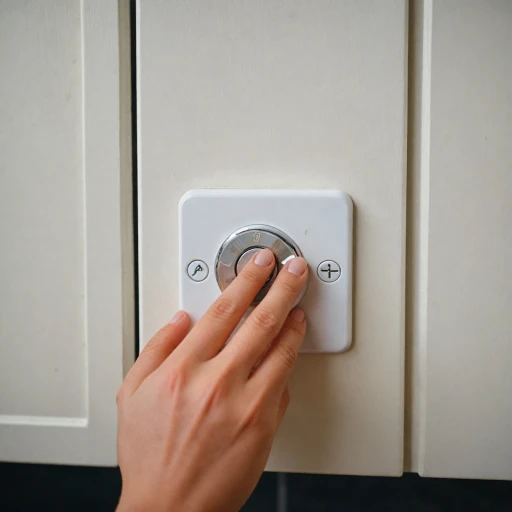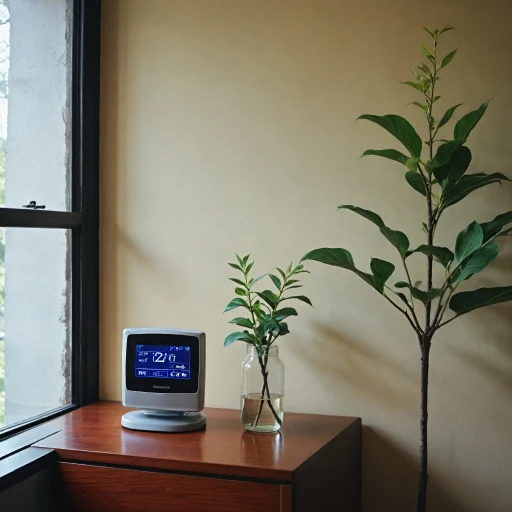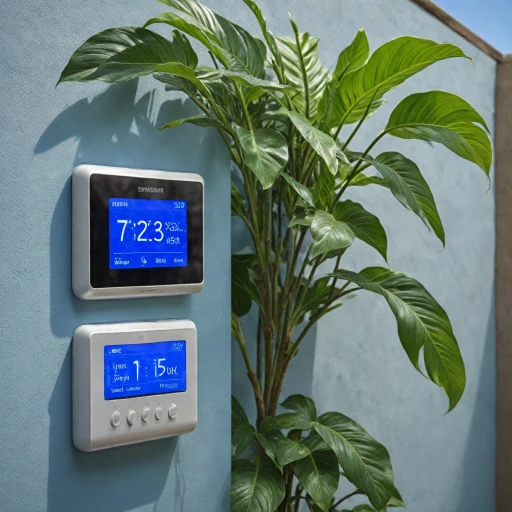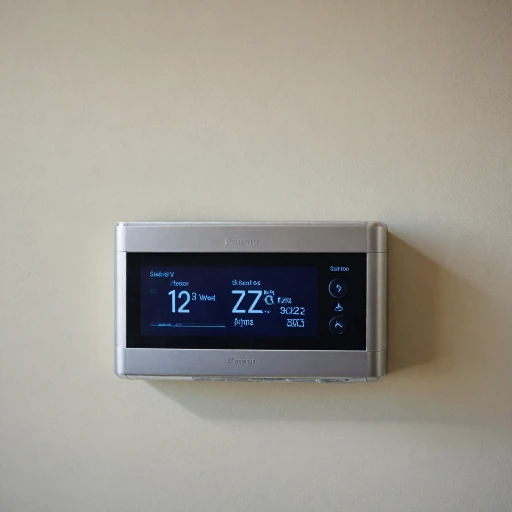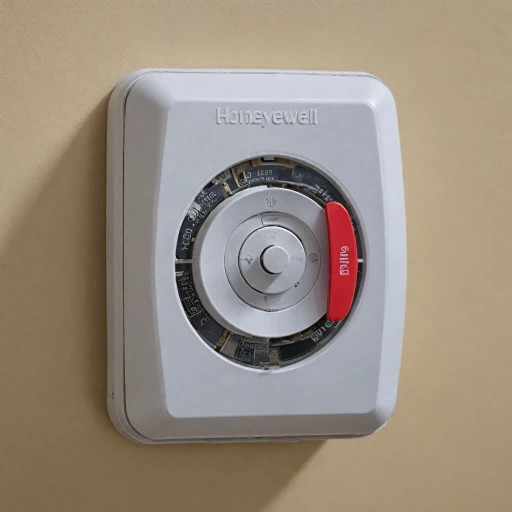
How Smart Thermostats Utilize Temperature Sensors
How Smart Devices Interpret Data
Smart thermostats have revolutionized the way we manage heating and cooling within our homes. Integral to this sophistication are the temperature probes, which play a critical role in interpreting environmental data. These sensors not only detect temperature changes in a room but allow thermostats like Nest and Honeywell to adjust accordingly, optimizing comfort and energy efficiency. The reliance on these sensors ensures that variations are monitored continuously, thus enabling real-time adjustments.
Both Nest thermostats and Honeywell products leverage advanced sensor technology to help customers configure systems that meet their personal preferences. For instance, with the help of the Google app, users can schedule their thermostats to react to specific temperature thresholds. This interaction is not only crucial for maintaining a desired climate but also for conserving energy resources, which we'll explore further in other sections.
Temperature sensors bundled within the thermostat sensor packs measure ambient conditions with accuracy, yet the nuances of sensor accuracy can vary between different brands and models. As a potential customer, evaluating these differences is essential. Furthermore, considering the durability and shipping options of the sensor items should be a part of your decision-making process when comparing thermostats like Honeywell's Prestige IAQ or Nest's sensor gen offerings.
Benefits of Temperature Sensors in Energy Efficiency
Maximizing Energy Efficiency with Smart Temperature Sensors
Temperature sensors play a crucial role in ensuring that smart thermostats deliver promised energy efficiency benefits. By accurately detecting room temperature changes, these sensors help thermostats like Honeywell and Nest to automatically adjust heating and cooling settings, thereby optimizing energy use. From reducing unnecessary energy consumption to facilitating timely adjustments, these smart devices contribute to significant reductions in energy bills and enhance overall home comfort. For instance, the thermostat sensor monitors real-time temperature fluctuations, allowing the heating and cooling systems to respond dynamically. This responsive adjustment ensures that energy is not wasted by over-heating or over-cooling a space. Smart thermostats often come equipped with room sensors, which further enhance the device’s ability to customize climate control in individual spaces. Customers have observed that products featuring such capabilities, like nest temperature and Honeywell remote sensors, lead to efficient room-specific temperature management, thereby maintaining optimal comfort without sacrificing energy efficiency. Moreover, many of these products offer tools and insights via apps, such as the Google app, that help users monitor their energy habits and adjust settings as needed. When ordering products like sensor gen or the Honeywell stock via a website or retailers offering free shipping, customers can often compare item features to find a suitable match. To enhance your home comfort, the integration of sensi room sensors provides an excellent opportunity to customize and improve energy efficiency. For more detailed information on how these technologies play together, visit our comprehensive guide on enhancing room comfort with Sensi room sensors. In summary, the application of advanced temperature sensors in smart thermostats significantly boosts energy efficiency by offering precise control over heating and cooling in real-time. For those looking to invest, it's important to evaluate sensor capabilities and reliability to ensure maximum energy savings.Challenges in Temperature Sensor Accuracy
Potential Obstacles in Sensor Precision
Smart thermostats like Honeywell and Nest have revolutionized temperature control through their advanced temperature sensors. While these sensors are integral in ensuring optimal heating and cooling, challenges in sensor accuracy can still occur, impacting the overall performance of your smart thermostat. Inconsistencies in sensor readings can arise from various factors:- Placement Issues: The location of the thermostat sensor is crucial. Installing sensors near a heat source or in direct sunlight can cause inaccurate temperature readings, leading to unnecessary heating or cooling adjustments.
- Building Structure Effects: Walls and floors within a home can affect the transmission of signals from room sensors. A thermostat might receive delayed or distorted readings depending on the structure and materials of your home.
- Interference with Other Devices: In homes with multiple smart devices, there is a possibility of electronic interference, which can disrupt signal accuracy of sensor items. Products like Nest Thermostat or Honeywell Stock Thermostat are designed to minimize this disruption through advanced technology.
- Aging of Sensors: Over time, sensor accuracy may decline due to wear and tear. Routine maintenance and checks are crucial to ensure longevity of your thermostat's battery and overall system integrity. Consider insights on [ensuring longevity] in relation to smart thermostat usage for optimal results.
- External Environmental Factors: Drastic temperature changes or severe weather conditions can interfere with how a sensor assesses indoor temperatures. Understanding how external elements play into your thermostat's readings is key, especially when considering enhancements with outdoor sensor devices.
Advancements in Temperature Sensor Technology
Innovations Elevating Temperature Sensor Accuracy in Smart Thermostats
The evolution of smart thermostat technology has been significantly enhanced by advancements in temperature sensor technology. As the demand for precision in home heating and cooling grows, these improvements provide customers with enhanced comfort and efficiency. Smart thermostat products like the Nest thermostat and Honeywell's Prestige IAQ have integrated sophisticated temperature sensors that offer remarkable precision. These sensors often include multiple sensor packs that allow thermostats to gather comprehensive data from different parts of a room, ensuring accurate temperature adjustments and energy savings. Developments in materials and sensor generations have also played a pivotal role. Advanced materials improve the lifespan and functionality of sensors, making them more resistant to environmental changes. This reliability means that customers can trust their thermostats to maintain consistent temperatures. In addition, technology has enabled better connectivity with other smart home devices. By utilizing frameworks like the Google app, these sensor thermostats seamlessly join existing smart ecosystems, allowing for integration with other room sensors and even honeywell remote products. Moreover, new models boast improved item shipping and ordering processes. Whether a customer orders through the main website or opts for free shipping, swift delivery of these improved products and services is often guaranteed. By comparing these advancements, it's clear that the pursuit of precise temperature control in smart thermostats is an ongoing journey. As technology progresses, it will be exciting to see how these enhancements continue to refine and redefine home comfort and efficiency.Choosing the Right Smart Thermostat with Reliable Sensors
Factors to Consider When Selecting a Smart Thermostat
When it comes to selecting a smart thermostat with reliable sensors, there are several important factors to evaluate. This part delves into the key aspects you should assess to ensure a well-informed decision.- Sensor Compatibility and Integration: Consider how well the thermostat integrates with the sensors you're planning to use. Brands like Honeywell and Nest provide various sensor packs that are compatible with their systems. Check if your home setup supports these brands and if the thermostats can work seamlessly with additional components such as room sensors and outdoor sensors.
- Energy Efficiency Features: Ask yourself how effectively the thermostat can use temperature sensors to enhance energy efficiency. A reliable smart thermostat will optimize heating and cooling to save on energy costs. Nest thermostats, for instance, are known for their ability to adjust temperatures based on your routine, thereby conserving energy.
- Installation and User-Friendliness: Look into whether the smart thermostat's installation process is beginner-friendly or if it requires professional installation, labeled as 'pro' installation. Some products might offer the option for DIY installation but could be complicated without technical know-how.
- App and Interface Usability: Evaluate the usability of any associated apps or interfaces. The Google app, which accompanies the Nest thermostat, is praised for its intuitive UI, making it effortless for customers to control temperature settings remotely. Ensure that the app provides ease of use both at home and on-the-go.
- Privacy and Security: Since smart thermostats connect to the internet, ensuring that they have a solid privacy policy is non-negotiable. Make sure the product's website elaborates on data protection measures they have in place.
- Shipping and Support Services: Assess the shipping options available. Some companies offer free shipping on certain items or orders. Also, it's crucial to look into the customer support services offered—whether there are resources available on the website or through a dedicated helpline, should you encounter any issues.
Future Trends in Smart Thermostat Sensors
Exploring Future Innovations in Smart Thermostat Sensors
As technology continues to advance, the future of smart thermostat sensors appears promising, especially with the integration of sensors tailored for specific applications. Several emerging trends are influencing how sensors will improve in the coming years.- Enhanced Sensor Precision: Future smart thermostats will boast highly accurate temperature sensors that can self-calibrate to maintain consistency and reliability. Accuracy issues previously encountered are getting addressed, ensuring customers receive precise information.
- Seamless Integration with IoT: We will likely see even more products, such as the Nest and Honeywell thermostats, enhancing their capabilities to connect with various smart home devices. This integration allows thermostats to make smarter decisions, optimizing heating and cooling systems efficiently.
- AI and Machine Learning Applications: Expect smarter algorithms that learn from the sensor data patterns in real time to ensure energy efficiency. Machine learning will enable these devices to better predict user preferences and adapt to changing room conditions.
- Advancements in Energy Efficiency: With evolving technology, sensors equipped in smart thermostats will play a bigger role in reducing energy consumption. As mentioned earlier, they accurately measure current conditions, thereby setting the right outputs for your HVAC systems.
- Emphasis on Privacy: Increasing awareness around data usage means future products will emphasize privacy policies more diligently, ensuring customer data from sensors is protected.
